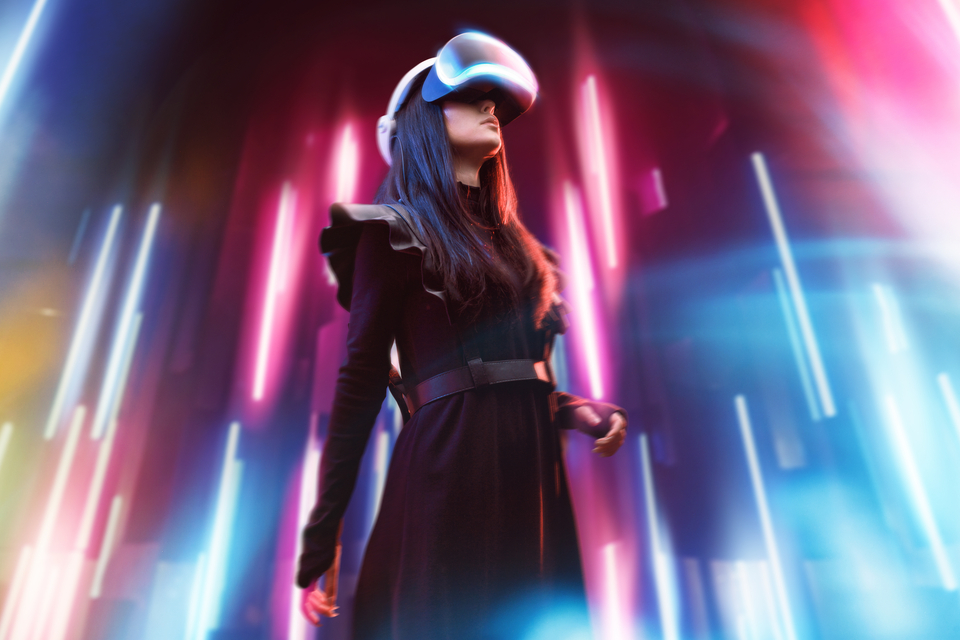British startup Improbable created a program called SpatialOS which aims to build vast, complex virtual worlds. Google teamed up with Improbable to make their creations public. With the aid of the Google Cloud Platform, SpatialOS could help Google make a huge push in the AR and VR world.
Video games have brought us thousands of digital worlds to explore, and the line between the real and the virtual is becoming far thinner in the light of recent advances in AR and VR technology. With SpatialOS, British startup Improbable is bringing a new level to the development of virtual worlds which could make for the biggest and most complex environments ever seen, and Google has announced that they are going to support that dream with their cloud computing platform.
The Power of Improbable and SpatialOS
Improbable started their company with a $20 million dollar investment from the American venture capital firm Andreessen Horowitz, and they have a particular purpose: giving developers the means to create new virtual environments for games as well as real-life situations.
Their program, SpatialOS, resembles a cloud computing platform for the development of virtual worlds for desktops as well as VR headsets. Since the program makes use of a limitless network of computers, it can create environments that are larger and more complex than those that are currently available. The approach is holistic, meaning that the more computers a developer uses, the more complex a virtual world. This enables them to run a vast number of simulations at once.
SpatialOS has thus far only been shared with a few interested parties. However, with the help of Google’s Cloud Platform, anyone will be able to use the program to develop new worlds. Improbable and Google are currently hosting a SpatialOS alpha program. A beta is set to launch in the first quarter of 2017. The two companies expect to see a massive influx of programmers trying out their new world-building software.
Gamers are excited about the complexity of virtual worlds offered by SpatialOS. Click To TweetGamers are excited about the complexity of virtual worlds offered by SpatialOS. That being the case, gamers aren’t the only beneficiaries of this new technology. Complex virtual worlds could host detailed simulations of physical locations, biological systems, governmental systems, and economies. Users and even AI can have a safe way to test operations intended for the real world.
Download SpatialOS Alpha here.
What this Could Mean for AR/VR
Among other successful ventures, Google is responsible for the cloud infrastructure upon which Pokemon Go functions. They have experience with the demand for virtual and augmented reality experiences. With high demand comes a need for more supply, and SpatialOS is putting the means of producing that supply in the hands of more developers. This means that the burgeoning field of VR is going to see a lot more development, and that translates into more users exposing themselves to this new interactive technology.
With high demand comes a need for more supply, and SpatialOS is putting the means of producing that supply in the hands of more developers. This means that the burgeoning field of VR is going to see a lot more development. As a result, more users will expose themselves to this new interactive technology.
With rivals like Amazon Web Services and Microsoft Azure, Google needs to make smart investments to stay ahead of the VR curve. If SpatialOS becomes a standard for VR development, then it would be a wise use of the tech giant’s power.
As VR garners more interest from the general public, developers are bringing us closer to experiences that resemble the Holodeck from Star Trek, or the popular Matrix trilogy. The implications of this rapidly advancing technology bring us some interesting questions. For instance, how will VR change social interaction, and would we allow people to live their entire lives in VR if it becomes possible to do so?
The open nature of the upcoming SpatialOS beta Almost redefines the term “augmented reality.” If people can design their own, ideal VR simulations by modifying models of the real world, then they can change the world to their liking. We could soon be peering into the windows of millions of parallel universes originating from the minds of people who only wanted to change what they see when they look outside their window.
A new Dawn for AI
Deep learning neural networks are allowing AI to learn as they operate, and SpatialOS can provide them a virtual training ground. SpatialOS enables detailed simulations that emulate actual physical locations such as cities and even the human body.
This gives developers a chance to test their AI programs in particularly dangerous environments before putting them in a place where they have an opportunity to interact with people.
Furthermore, the AI field is ready to enter these simulations. For example, the OpenAI lab run by Tesla’s Elon Musk and Y Combinator’s Sam Altman is already using their Universe software to train AI agents to use any computer application. It’s a safe move for companies that want to create self-driving cars that can effectively traverse complex road networks without having to undergo expensive testing in the physical world. AI and VR could ensure that their product is as harmless as it is useful.
With virtual environments reaching an unprecedented level of complexity alongside AI technology that is doing essentially the same thing, it will be exciting to see where all of this will lead. It’s a match made in heaven. It is the hope of many researchers, developers, and gamers that it proves to be a happy and fruitful marriage.


















Investment is one of the best ways to achieve financial freedom. For a beginner there are so many challenges you face. It’s hard to know how to get started. Trading on the Cryptocurrency market has really been a life changer for me. I almost gave up on crypto at some point not until saw a recommendation on Elon musk successfully success story and I got a proficient trader/broker Mr Bernie Doran , he gave me all the information required to succeed in trading. I made more profit than I could ever imagine. I’m not here to converse much but to share my testimony; I have made total returns of $10,500.00 from an investment of just $1000.00 within 1 week. Thanks to Mr Bernie I’m really grateful,I have been able to make a great returns trading with his signals and strategies .I urge anyone interested in INVESTMENT to take bold step in investing in the Cryptocurrency Market, he can also help you RECOVER your lost/stolen Cryptocurrencies. you can reach him on WhatsApp : + 1 (424) 285 – 0682 or his Gmail : BERNIEDORANSIGNALS @ GMAIL . COM bitcoin is taking over the world, tell him I referred you